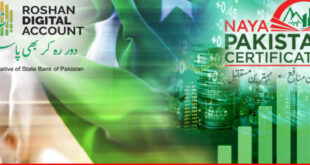There seems to be positive sentiment in the economy with the new government taking charge in May 2013. There are high hopes that the economy will flourish, law and order situation will improve, inflation will subside and development projects will create more jobs. The sentiment is reflected in business growth and the KSE-100 index trading at record high of 22,700 points and going strong. Despite the government approaching the IMF and publically announcing that electricity issue will remain till the tenor of the government, the economy is expected to improve provided the promises made by the government come to life. The retail and restaurant business is flourishing. The current terrorism, law and order issues high borrowing from the government are issues having no immediate or short term solution. Energy crisis and gas shortage continues to hamper industrial growth especially in Punjab. Law and order situation puts a negative impact on the economy internationally. The previous neither the current government have taken any initiatives to resolve the ongoing issues. GDP target in FY13 was 3.6 percent lower than the target of 4.3 percent. Fixed capital formation has decreased by 1.8 percent although Large Scale Manufacturing sector grew by 4.8 percent as on April 2013.
A positive sign recently was declining inflation. In May 2013, inflation was 5.1 percent whereas Core inflation was 6.7 percent, the lowest since October 2009. Coupled with reduction in interest rates, both were viewed as positive sign for the economy to encourage investments and bank lending. Inflation is again expected to increase with high price of petroleum and General Sales Tax (GST) increasing from 16 percent to 17 percent and levy of tax on goods and services. The GST does not mean that prices will exactly increase by 1 percent. The general behavior of the market will be such where prices will increase by a higher percentage point magnifying inflation. Once again, both inflation and the policy rate will increase knowing the fact that the economy will only flourish in an environment where interest rates are low and that inflation is on a decline. SBP has maintained the discount rate at 9.0 percent. The core challenge for SBP is now to ensure foreign flows whether they come through expansion of export businesses, investments in the manufacturing sector, privatization inflows or increase in worker remittances averaging more than USD 1 billion a month. The IMF program has put pressure on dollar denominated reserves expected to bring another round of currency slide. Dollar now is expected to trade beyond PKR 110 per USD by December 2013 continuing with the trend of devaluation of more than 10 percent year on year. Positive sentiment of the economy seems to be working at the moment; however, it is unsure how long the trend will continue. Until the sentiment remains positive, it is expected that investments will continue.
Fiscal deficit was 8.8 percent of GDP in FY13. Subsidies yielding marginal benefit and poor tax base are expected to keep the debt burden high and higher borrowing from the central bank. Upto June 7, 2013, borrowing by the government against treasury bills was PKR 1,230 billion. Despite SBP announcing in each Monetary Policy that borrowings should reduce, the government has no other option but to borrow from the central bank. Secondly, with introduction of IPS, now consumers also invest in Treasury Bills a win-win situation for the government. The tax base is not expected to improve anytime soon. Hardly any investments are flowing into Pakistan which will keep pressure on reserves high.
The challenge now is to save Pakistan from another economic downturn as witnessed during times of recession. International Aid and donations are also not moving into Pakistan as swiftly since they know the money will not be utilized for the purpose intended. Pakistan has a package of USD 1 billion with IDB with first of the payment expected in September 2013. Worker remittances considering brain drain is expected to cross USD 15 billion by June 2014. The government will repay IMF USD 2.80 billion in FY14, USD 1.35 billion by FY15 and USD 60 million by FY 16, this too only keeping with the assumption that the current debt levels and international funding remains same and that no now funding falls in the way.
There has been high speculation as to how the Monetary Policy stance will change going forward. Most believe that the policy rate will be revised and once again increase keeping with high GST and round of inflation. Others believe that SBP might hold the discount rate at current levels to stimulate the economy giving benefit of low interest rates. It, however, is likely that the policy rate will increase as believed by most working in the financial sector. In doing so, interest rate will rise reducing the incentive for banks to extend loans. Excess funds will be invested in treasury bills giving banks risk free returns. Increase in discount rate to counter inflationary pressures is more likely the scenario going forward. SBP on the other hand would like to curtail inflation and increase GDP which will not be achieved only tweaking the Monetary Policy. Other factors which are likely to play a role in high inflation will be devaluation increasing price of import raw materials, cost of inputs, power and energy crisis and law and order issues. If the current government implements all development plans and focus on job creation through projects, it is likely that the negativity will be reversed and the economy will thrive. It is said that the stock market gives reflection of the economy. Increase in the KSE index versus well shows that businesses are doing well and that expectation from the government is driving the market. With looming inflation due to devaluation, petroleum prices and taxation, higher interest rates to counter the same seems to be the likely scenario in the upcoming Monetary Policy.
 PAGE Blog Business Weekly Magazine
PAGE Blog Business Weekly Magazine

